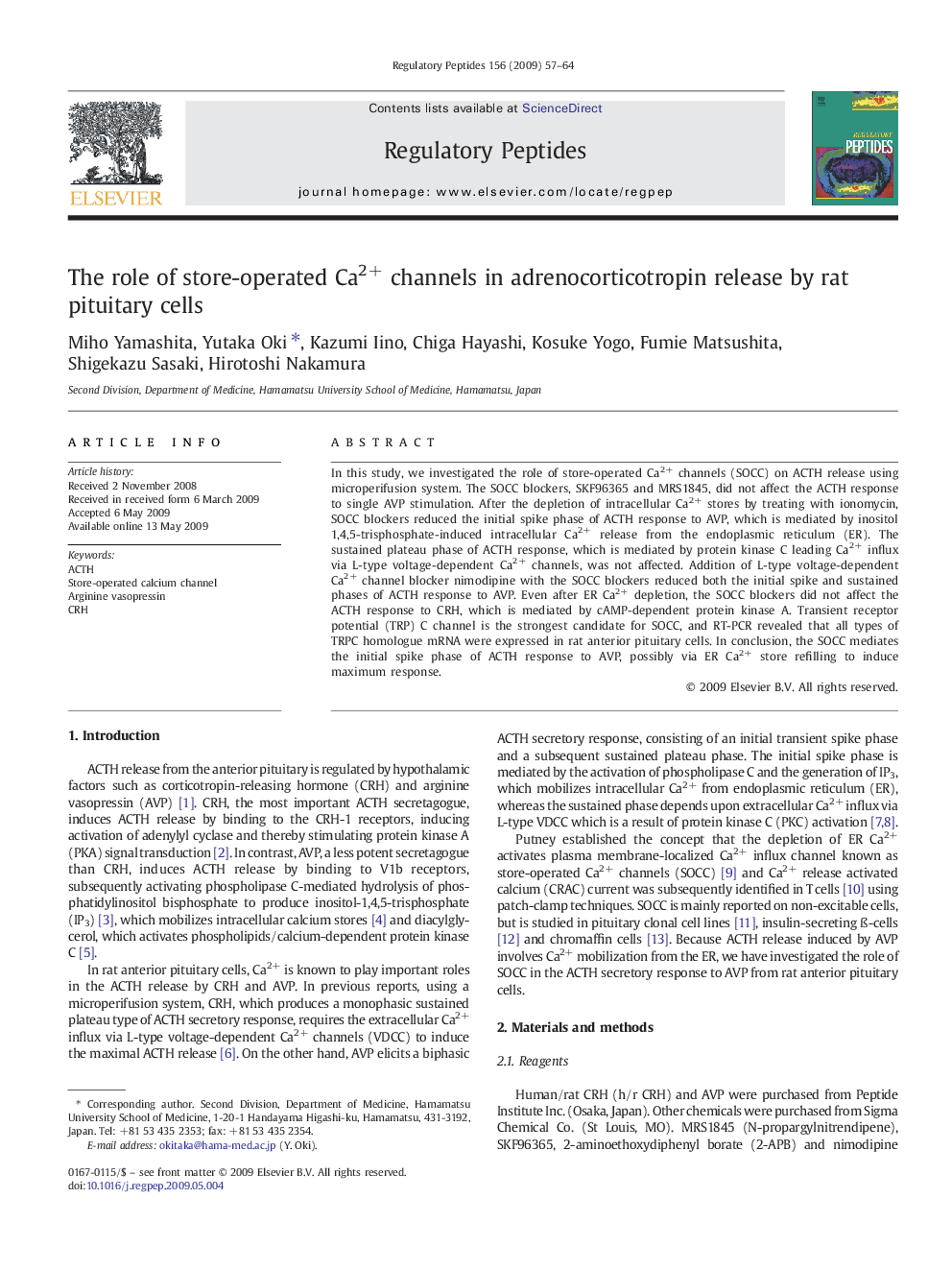| Article ID | Journal | Published Year | Pages | File Type |
|---|---|---|---|---|
| 2022926 | Regulatory Peptides | 2009 | 8 Pages |
In this study, we investigated the role of store-operated Ca2+ channels (SOCC) on ACTH release using microperifusion system. The SOCC blockers, SKF96365 and MRS1845, did not affect the ACTH response to single AVP stimulation. After the depletion of intracellular Ca2+ stores by treating with ionomycin, SOCC blockers reduced the initial spike phase of ACTH response to AVP, which is mediated by inositol 1,4,5-trisphosphate-induced intracellular Ca2+ release from the endoplasmic reticulum (ER). The sustained plateau phase of ACTH response, which is mediated by protein kinase C leading Ca2+ influx via L-type voltage-dependent Ca2+ channels, was not affected. Addition of L-type voltage-dependent Ca2+ channel blocker nimodipine with the SOCC blockers reduced both the initial spike and sustained phases of ACTH response to AVP. Even after ER Ca2+ depletion, the SOCC blockers did not affect the ACTH response to CRH, which is mediated by cAMP-dependent protein kinase A. Transient receptor potential (TRP) C channel is the strongest candidate for SOCC, and RT-PCR revealed that all types of TRPC homologue mRNA were expressed in rat anterior pituitary cells. In conclusion, the SOCC mediates the initial spike phase of ACTH response to AVP, possibly via ER Ca2+ store refilling to induce maximum response.
